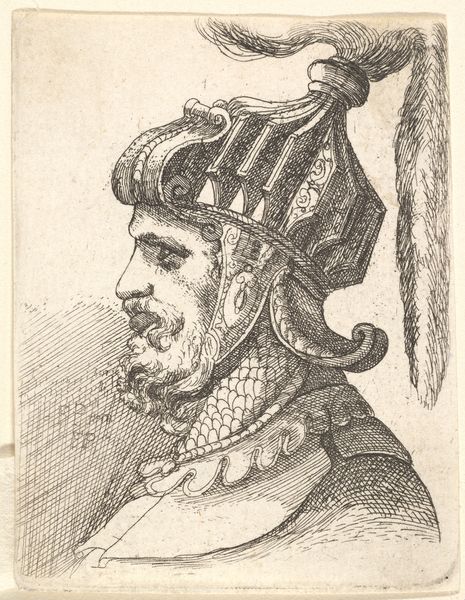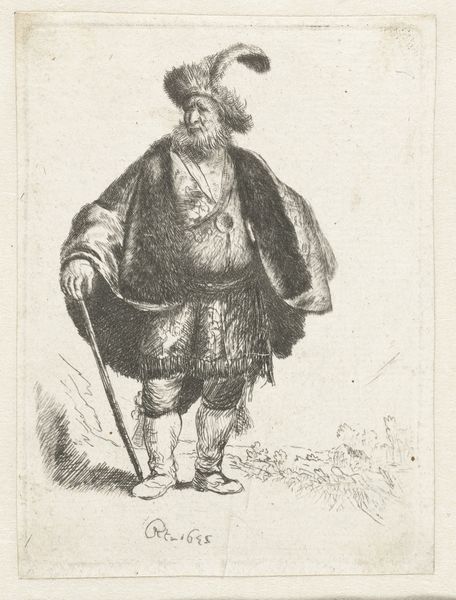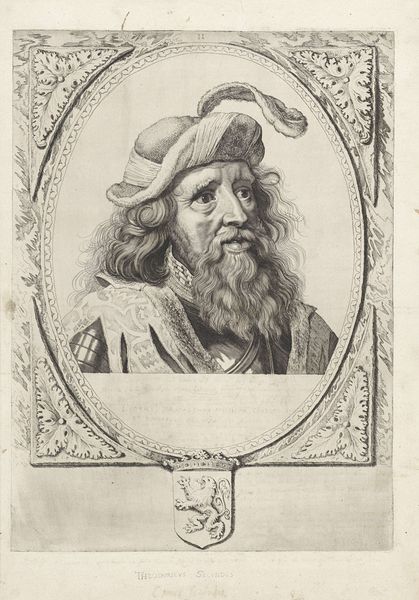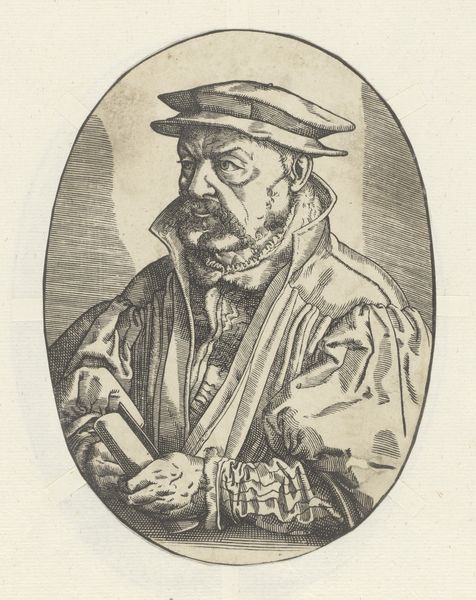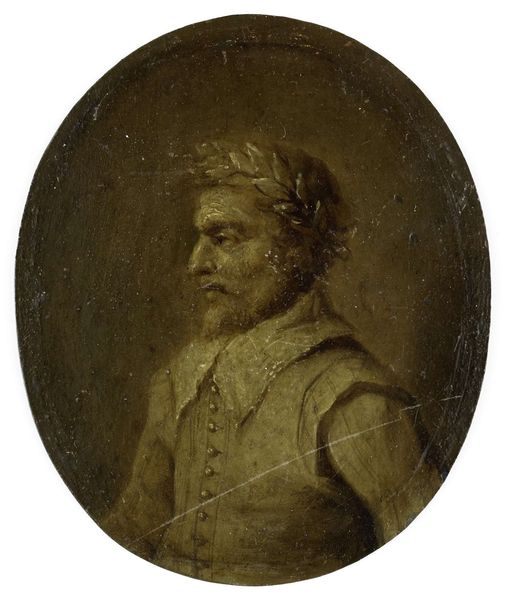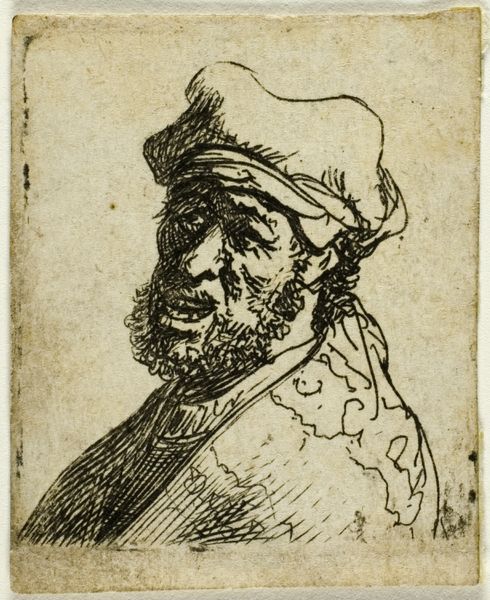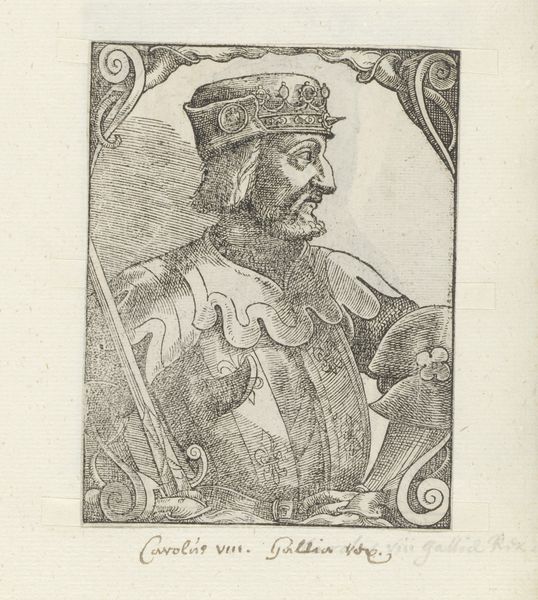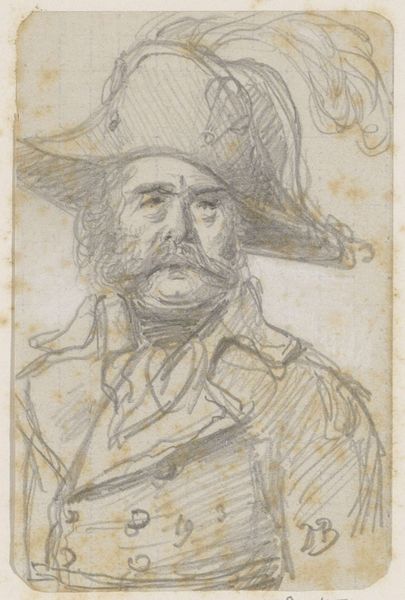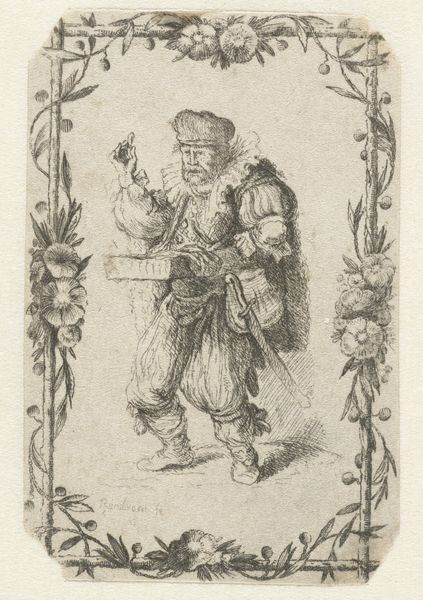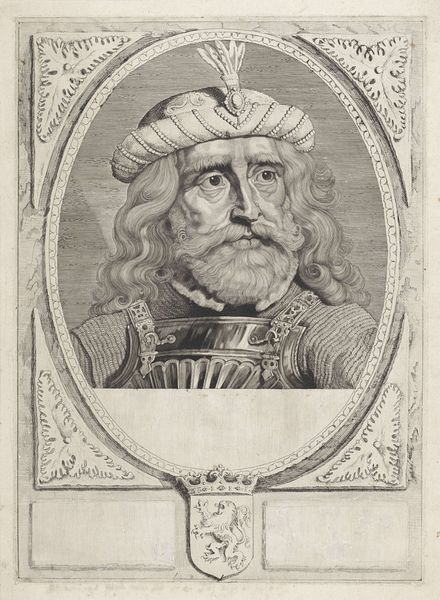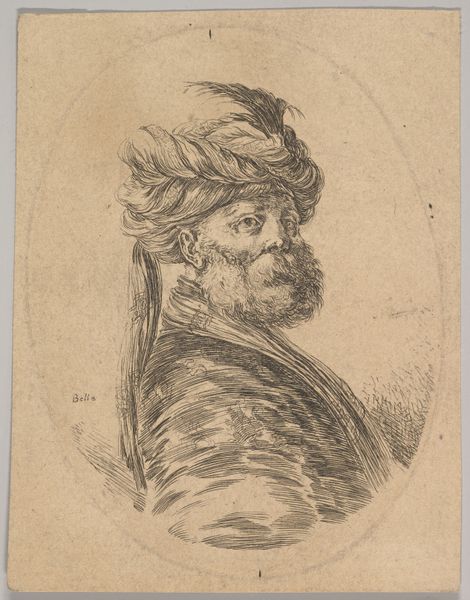
drawing, pencil
#
portrait
#
drawing
#
baroque
#
pencil drawing
#
pencil
#
history-painting
#
northern-renaissance
Dimensions: height 76 mm, width 61 mm
Copyright: Rijks Museum: Open Domain
Editor: Here we have Pieter Cornelisz. Verbeeck’s 17th-century pencil drawing, "Borstbeeld van een man in Oosterse kledij" - that's "Bust of a Man in Oriental Clothing" for us English speakers! It’s mostly muted grays, and the fine lines create this almost wistful atmosphere. What do you see when you look at this work? Curator: Ah, yes! This piece whispers tales of exotic lands and distant trades. I find myself transported, not just to the "Orient" that was so fascinating (and often misunderstood) at the time, but to the artist’s own imaginings. See how Verbeeck renders the textures – the fur trim, the feather in his cap? It's almost a form of storytelling through textiles. And do you notice how his gaze is averted, perhaps lost in thought? What do *you* make of that? Editor: It feels like he’s posing, but not in an arrogant way. More like a pensive traveler… or an actor perhaps? Is that spear or staff just behind him part of this imagined role, then? Curator: Exactly! That prop is very deliberately placed and adds another layer. Is it about power? Authority? Maybe it's more theatrical – Verbeeck staging his subject, exploring themes of identity through costume and pose. Remember this was the Dutch Golden Age and an increase in international commerce fueled interest in global cultures. Editor: So, more than just a portrait, it’s almost a performance frozen in pencil. Curator: Precisely! It reminds us how much “truth” in art is constructed and contextual. I look, and wonder what inspired this. How a simple drawing is layered with social history and artistic invention! Editor: I hadn't thought about the staged aspect. It makes me consider the intention behind the "Oriental" attire too - like Verbeeck might be playing with our expectations. Thank you! Curator: And thank you for letting me journey with you, through a drawing, through history.
Comments
No comments
Be the first to comment and join the conversation on the ultimate creative platform.


